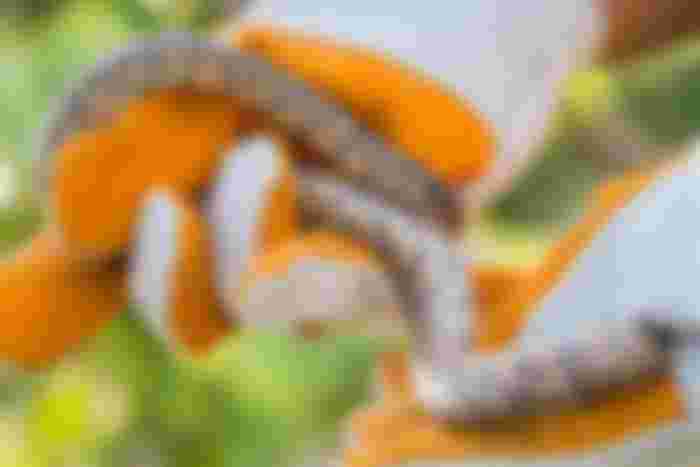Remember, there are many different kinds of snakes. Some are aggressive, others are venomous or non-venomous, and some are aggressive and venomous. Whatever the case may be, you need to be educated on what snake you are trying to catch before you even begin.
The most common venomous snakes you may need to catch (in the USA) are the copperhead, cottonmouth, Diamondback rattlesnake, and the coral snake.
It isn’t advisable to try and catch a venomous snake unless it is a necessity.
If your home and family are in danger then you definitely want to get rid of it as humanely as possible.
Don’t be like my dad who cut off the head of a rattlesnake with a shovel in our Utah backyard because it went near my mom…I’ll never forget how funny that was. He kept hitting it even though it was already dead. Good times!
However crazy my dad can be, he does teach something very important. When dealing with a venomous snake you can never be too careful. Venomous snakes can seriously injure or kill a person.
The best method for catching a venomous snake is to call a professional. If you are doing it for fun (which I highly doubt and sincerely hope that you are not) or you just don’t have the funds to call a professional, or you just want to show off your protective instincts like my dad, be sure to use extreme caution and wait for the snake to be a bit more relaxed.
Note: Always wear gloves if you are choosing to catch it by hand.

King Snake and Leather Gloves
Here is a list of things you might want to have with you if you are catching a snake on your own:
Gloves
Snake Bite Kit
Pillowcase, bucket, or fishnet
Snake Tongs (Click here for Snake tongs)
Snake Trap (Click here for a great trap on Amazon!)
A Shovel…(Just Kidding. Please don’t kill any snakes!)
Always have a first aid kit/snake bite kit around and be near someone with a phone in case of an emergency.
The pillowcase, bucket, or fishnet is to hold the snake. The ideal would be something that is small and dark. Most snakes are more comfortable in small and dark places- that is their natural dwelling of choice.
If a snake feels threatened or is ready to strike they usually form their bodies into an ‘S’ shape. If a snake does this, either wait for it to calm down or use your snake tongs. (If you don’t have snake tongs you can use a forked stick…although it might be a bit harder for you to keep a hold on it with a stick.)
Do not approach the snake by surprise:Catching a snake by surprise will increase the likelihood that he/she will strike. Approach the snake calmly and obviously.

Do not approach the snake by surprise:Catching a snake by surprise will increase the likelihood that he/she will strike. Approach the snake calmly and obviously. The snake should perceive you and hear you.
Observe the snake’s body language: A snake that is on guard will generally coil up into an “S” shape. If a snake is calm, it will flick its tongue out to taste the air and get a feel for your scent. The tongue flick is usually a good sign and it’s probably safe to approach.
Approach to the side: Do not approach the snake in the back by the tail, or the front by the head. Snakes are good at attacking from their front and back. They can easily strike from those two sides of their body.
Coax or Pin it down: Coax the snake with a broom or stick into whatever you have to catch it. Or, you can pin it down with your snake tongs (or forked stick) at the back of the head. Be careful not to press too hard or you will injure its spine. Apply just enough pressure that it won’t be able to get away.
Relocate: If you are trying to relocate a snake, put your catch in a bag or other small, dark place, and drive/walk it to a safer home. You may want to do some pre-research to discover where that should be. If it’s a venomous snake, you probably don’t want to relocate it to your neighbor’s yard.
Setting it Free: Now, I would most likely throw it and run, but… Well, that wouldn’t be the best method. The best thing to do would be to be as gentle as you can, and put enough distance between the two of you so that you are out of any danger of being bitten.
Editor:Tariq shahzad (zoologist)

